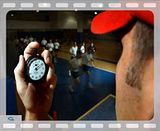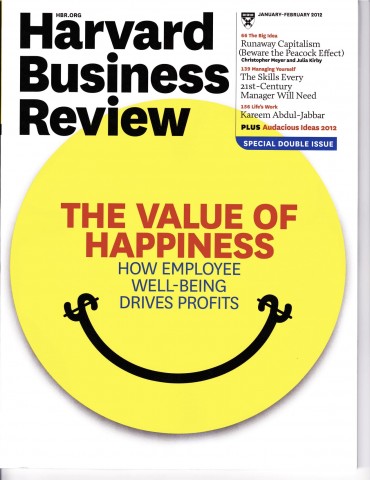 I was reminded of the classic book yesterday while Skyping with a young manager who trains employees for a multinational Fortune 100 consumer electronics firm in the Washington, D.C., area. She asked me if I’d ever read the book—well yes! We laughed. In 1982 when it was first published!
I was reminded of the classic book yesterday while Skyping with a young manager who trains employees for a multinational Fortune 100 consumer electronics firm in the Washington, D.C., area. She asked me if I’d ever read the book—well yes! We laughed. In 1982 when it was first published!
Hearing this young manager’s perspectives on the book led me to dust off my copy and peruse this forgotten gem. Since reading it nearly 30 years ago, I’ve worked for nine different managers. Which ones were most effective? Which ones elicited the best from their staff? Which ones ran productive, prosperous and happy shops? Yep, it’s the ones who employed the One Minute Management techniques: One Minute Goals, One Minute Praisings, and One Minute Reprimands. They weren’t the ones who spent their days sequestered in their closed offices not providing any feedback—good or bad.
“The best minute I spend is the one I invest in people.”
Written as a parable told through the eyes of a young manager’s search for the best leadership and management skills, one of the key elements of One Minute Management is MBWA (management by walking around), which was coined by Tom Peters around the same time in his best-selling In Search of Excellence.
“Goals begin behaviors; consequences maintain behaviors.”
Good performance begins with clear goals and expectations. These are set during a One Minute Goals meeting. Here, the manager and the employee agree on goals, write them down and then occasionally review them to ensure that they are being met. Consequences are reviewed too—for positive and negative outcomes. The meetings are longer than one minute, but are short and to the point.
MBWA is critical to techniques two and three. Walking around helps a manager catch someone doing something right and provides the opportunity to give One Minute Praisings. The manager praises the employee on the spot, telling him specifically what he did correctly and how that positively impacts the company’s business. Then, the manager lets the employee savor the moment, and finishes with a handshake.
“Feedback is the breakfast of champions.”
The third technique is the One Minute Reprimand. Being honest and accountable with those around you involves reprimanding when a wrong has occurred. The first step is to reprimand immediately and specifically. This is the same as the praise technique, and it holds an important aspect of the goals technique: it enables an understanding of goals and responsibilities and how to complete them correctly. It’s critical that following the reprimand, you shake hands and remind the person that it was simply their performance that you did not like—not them as a person. The handshake is important and reinforces that you believe in the person and their abilities.
“People who feel good about themselves, produce good results.”
The One Minute Manager is one of the best selling business books of all time. For nearly 30 years, millions of managers in companies small and large worldwide have benefitted from the simple techniques laid out by authors Kenneth Blanchard and Spencer Johnson.
It’s a quick read that lays out simple and easy-to-use basic management skills (that are used less often that you would think). You can differentiate yourself from most managers by actually using them!
If you’re not regularly using these simple techniques, I challenge you to try them out and see what changes with your team. Call or email me for a 30-minute leadership coaching session. Let’s put the One Minute Management techniques to work for you!


 I was reminded of the classic book yesterday while Skyping with a young manager who trains employees for a multinational Fortune 100 consumer electronics firm in the Washington, D.C., area. She asked me if I’d ever read the book—well yes! We laughed. In 1982 when it was first published!
I was reminded of the classic book yesterday while Skyping with a young manager who trains employees for a multinational Fortune 100 consumer electronics firm in the Washington, D.C., area. She asked me if I’d ever read the book—well yes! We laughed. In 1982 when it was first published! Have you ever endured a team meeting that went from productive to disastrous? Where the people from the departments that make up the team just didn’t seem to get it? They fought with each other, protected their own departments and were distracted by a bazillion side issues and personal problems? Did you drift off, thinking of Elvis Costello’s plaintive cry, “What’s so funny ‘bout peace, love and understanding?” Does it make you want to go back to the good ol’ days where each department did its job and didn’t have to worry about what was going on in other areas of the organization?
Have you ever endured a team meeting that went from productive to disastrous? Where the people from the departments that make up the team just didn’t seem to get it? They fought with each other, protected their own departments and were distracted by a bazillion side issues and personal problems? Did you drift off, thinking of Elvis Costello’s plaintive cry, “What’s so funny ‘bout peace, love and understanding?” Does it make you want to go back to the good ol’ days where each department did its job and didn’t have to worry about what was going on in other areas of the organization?
 The Science Behind the Smile: Researchers are now measuring happiness and defining what really makes people happy. It’s not what you think. Yes, people who are rich, in a good relationship, actively participating in their church and healthy are happier overall. But events like getting a promotion, a new house or car or acing an exam only create more happiness for about three months. The frequency of positive experiences is more important than the intensity. And at work, what really contributes most to happiness is feeling appropriately challenged—when you’re striving to achieve goals that are ambitious but not out of reach. Managers take note: happier workers are more productive and creative. Years of research on rewards and punishment present a very clear finding: rewards work better.
The Science Behind the Smile: Researchers are now measuring happiness and defining what really makes people happy. It’s not what you think. Yes, people who are rich, in a good relationship, actively participating in their church and healthy are happier overall. But events like getting a promotion, a new house or car or acing an exam only create more happiness for about three months. The frequency of positive experiences is more important than the intensity. And at work, what really contributes most to happiness is feeling appropriately challenged—when you’re striving to achieve goals that are ambitious but not out of reach. Managers take note: happier workers are more productive and creative. Years of research on rewards and punishment present a very clear finding: rewards work better. With the start of the new year, many of us reflect on areas in which we hope to improve, leading us to a more fulfilled life. Perhaps one of these challenges resonates with you.
With the start of the new year, many of us reflect on areas in which we hope to improve, leading us to a more fulfilled life. Perhaps one of these challenges resonates with you. Last week, I was invited to take part in a local client’s holiday festivities (and I mean festivities)! I am so grateful that I could say yes because it gave me a better understanding of why this company is successful.
Last week, I was invited to take part in a local client’s holiday festivities (and I mean festivities)! I am so grateful that I could say yes because it gave me a better understanding of why this company is successful.


